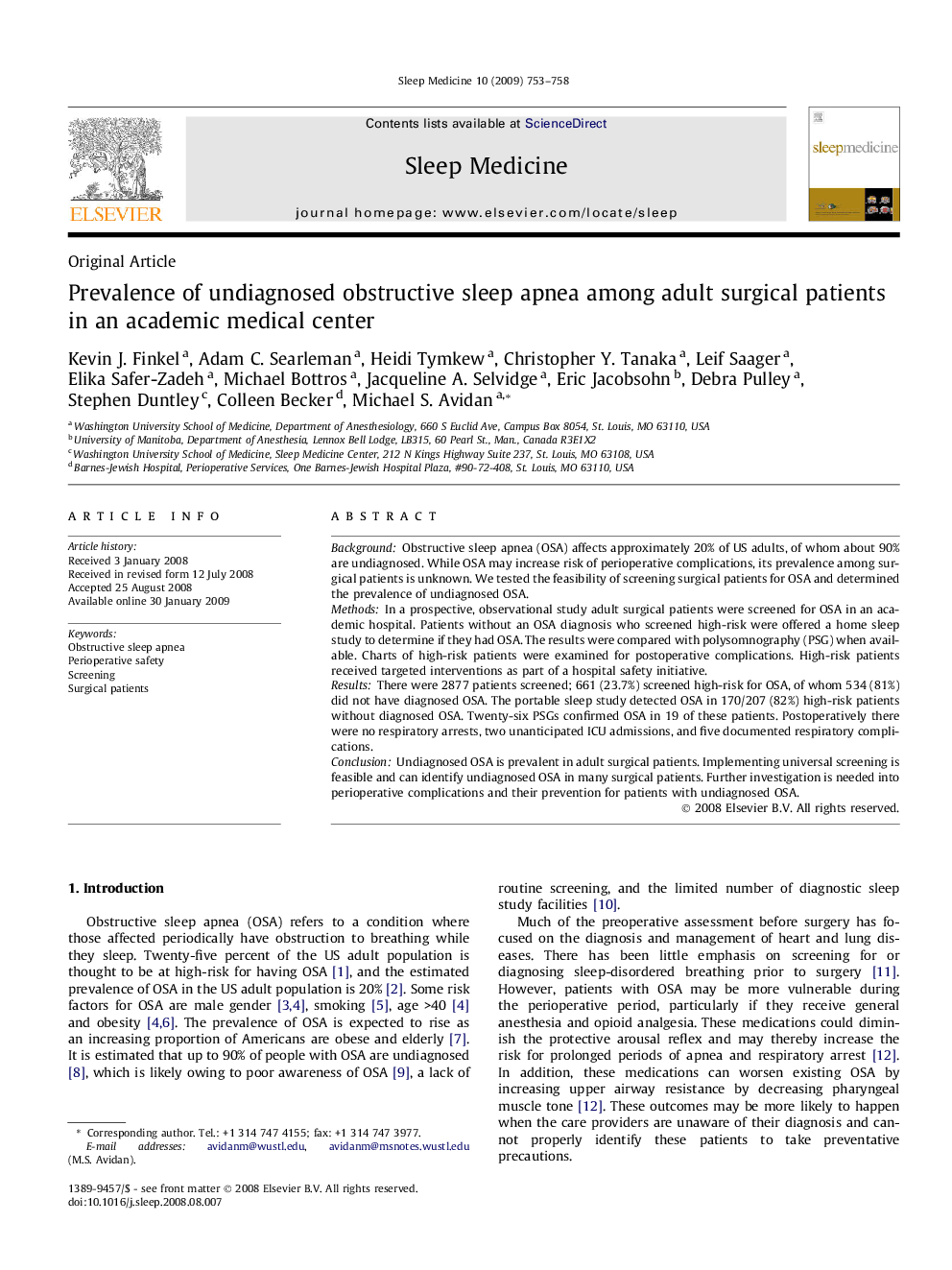| Article ID | Journal | Published Year | Pages | File Type |
|---|---|---|---|---|
| 3177565 | Sleep Medicine | 2009 | 6 Pages |
BackgroundObstructive sleep apnea (OSA) affects approximately 20% of US adults, of whom about 90% are undiagnosed. While OSA may increase risk of perioperative complications, its prevalence among surgical patients is unknown. We tested the feasibility of screening surgical patients for OSA and determined the prevalence of undiagnosed OSA.MethodsIn a prospective, observational study adult surgical patients were screened for OSA in an academic hospital. Patients without an OSA diagnosis who screened high-risk were offered a home sleep study to determine if they had OSA. The results were compared with polysomnography (PSG) when available. Charts of high-risk patients were examined for postoperative complications. High-risk patients received targeted interventions as part of a hospital safety initiative.ResultsThere were 2877 patients screened; 661 (23.7%) screened high-risk for OSA, of whom 534 (81%) did not have diagnosed OSA. The portable sleep study detected OSA in 170/207 (82%) high-risk patients without diagnosed OSA. Twenty-six PSGs confirmed OSA in 19 of these patients. Postoperatively there were no respiratory arrests, two unanticipated ICU admissions, and five documented respiratory complications.ConclusionUndiagnosed OSA is prevalent in adult surgical patients. Implementing universal screening is feasible and can identify undiagnosed OSA in many surgical patients. Further investigation is needed into perioperative complications and their prevention for patients with undiagnosed OSA.
